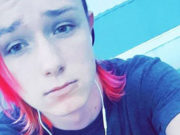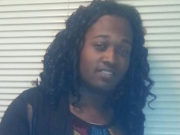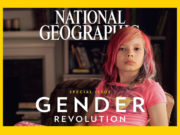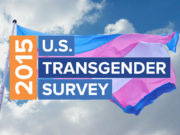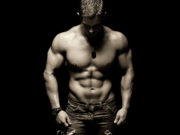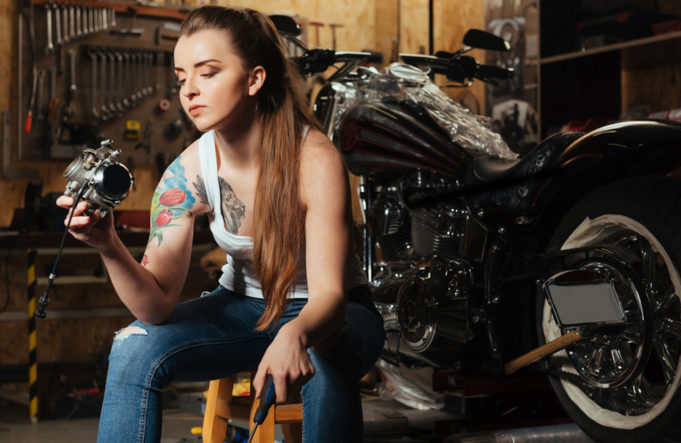Depending on where you look it up, the definition of femininity is usually defined as the quality of being female. You may also hear it referred to as girlishness or womanhood. Whatever name you want to give it, femininity is usually stereotypically defined along with the constructed roles that society associates with it. As women in general, we are bombarded with these social stereotypes as they are fed to us through the advertising we see, the movies we watch, and anywhere else a woman is represented in our culture. As transgender women we are also bombarded with these “so called” social norms, but with the added pressure of having to “pass” in order to feel more accepted and in some cases to avoid the threat of discrimination or violence.
“As women, we can choose to conform to what we perceive society thinks is feminine or we can choose to define it for ourselves.”
Women come in all shapes and sizes. Each one of us has our own definition of what is masculine or feminine. Some of us thumb our nose at the thought of these binary norms in the first place. It is all subjective. As women, we can choose to conform to what we perceive society thinks is feminine or we can choose to define it for ourselves. No matter what your definition is there will still be judgment from others. It is unavoidable and we can choose to be bothered by it or simply not care.
Imagine being a fully grown adult but going through the emotional and physical changes of a 13-year-old. For a transgender person who transitions later in life, this is a strange reality we go through. Though intelligently we may be at a different level, we endure this period of change with almost no prior socialization in our true gender. It is the extreme level of awkward and wonderful at the same time. We get to finally be ourselves even if we aren’t really sure how to do so. Just like any teenage girl, we experiment with our own concepts of what femininity is as we set out to define it for ourselves. In the beginning, we may tend to present in more of an extreme concept of our idea of what is feminine. We may wear too much makeup, or clothes that perhaps are considered not right for our age in the eyes of those who judge us based on their own concepts of what femininity is. Just like any young girl we have to learn whom we are in our own presentation, but without the influence of an upbringing where we are told what is right or wrong in how we go about it.

How I choose to present myself is often dictated by my own dysphoria. I have learned that by doing my makeup a certain way, that I can reduce the effects of it. How I present myself, the clothes that I wear, they all happen in an attempt to see myself as the person I truly am. But in the beginning of my journey there was also a sense of desperation to how I presented myself. In a way, my presentation was a shield from my fears. I was worried about being clocked, and I was concerned about being accepted as a woman. I felt that by not fitting into what I thought was society’s idea of femininity was, that I was putting myself in danger. The world is dangerous enough for women in general, but as a transgender woman there are additional levels of violence and discrimination that we face.
“How you define femininity is entirely up to you.”
In the beginning I was trying just fit in. I wanted to be able to go to the store without getting a weird look or being misgendered. I would concern myself with how a woman walked and talked. I thought about mannerisms and many other things. I worried about how low my voice may have been. As time went on, I began to realize that these concepts are all based on the ideas of others or my own ignorant ideas of what a woman was. I realized that women come in a million varieties. There will always be a woman out there who has a lower voice than I do. There will always be someone who walks more “manly” than I do in the eyes of others. There will be women who have smaller breasts than I do, who have fewer curves, and display mannerisms that are more “masculine” than mine in the eyes of others. I learned I was concerned about opinions and not realities. I realized that I shouldn’t live in fear of who I was, and that I shouldn’t let opinions or hate dictate how I saw myself. No matter what I do there will always be evil in the world, but I will at least face it as myself and not under the pretense of being someone else.
How you define femininity is entirely up to you. If you talk with a lower voice, it is still a woman’s voice because you are a woman. You don’t have to worry about mannerisms; if they are yours, they are female mannerisms. You don’t have to worry about whether you wear makeup or how you dress. You don’t have to worry about “passing” if you don’t want to. There are plenty of cisgender women who wouldn’t pass based on the standards that many of us put on ourselves. You can choose to let society define what is feminine for you, or you can do so yourself. You can be a “tomboy,” or “girly-girl.” You can be fluid. Nobody owns femininity, particularly yours. The only person who needs to see herself as the woman they are is you. The only person who needs to define your femininity is you. If you are able to find it for yourself, than perhaps the rest of the world will finally see you for whom you truly are.














